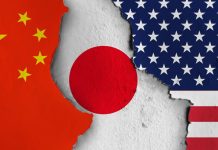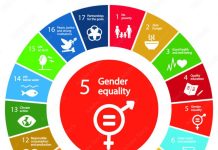It is an old phrase that a picture is worth of over a thousand words but new one in an altered image is worth of thousands of lies and deception. Whenever we see a photograph or a video especially in news media, we take it as a real but actually and unfortunately reality is far-away.
Here question rises that how a photograph or video could deceive masses even if it is real. We try to find the answers, According to Scot Macdonald there are five types of photographic deception (1). 1 Focusing on certain things and not others: The media is like a searchlight. It focuses its beam on a single selected subject and can left the remaining one. Just like the media in general, photographers can use their cameras to capture certain events, while ignoring others and, by doing so, present a distorted picture of reality. Knightely nicely said that even if “the camera does not lie directly, it can lie brilliantly by omission”(2). In WWI and WWII thousands of photographs and video were released by the both parties but they presented only bright sides not the dead bodies and wounded soldiers photographs were released. In 1885, the British government sent Roger Fenton, a founder of the Royal Photographic Society and photographer of the royal family, to the Crimean War to attempt to counter negative press coverage. Fenton arrived in Balaclava on 8 March 1855 and started taking photographs. His pictures portray a clean, ship-shape war, bordering on a picnic. There are no wounded, let alone any corpses. The photographs show only happy troops and elegant officers. The pictures were accurate in the sense of showing people and events as they were without for the most part being staged. They were, however, clearly a deception for propaganda purposes that was achieved by focusing on certain things while ignoring others(1).
2. Staging a Photograph or video:
Since the invention of camera staging the events and represent it as a real has been in practice even the wars are staged for gaining some specific targets. In WWII Nazi German published a magazine ‘Signal’ which was an extremely effective propaganda organ, it probably used photographs from training exercises and labelled it as combat shots. Russian also produced a staged film in WWI in which they showed “German” nurses, dressed as religious sisters, stabbing wounded Russian soldiers on the battlefield. If we examine the photographs and videos of WWI & II most of it were found staged(1).
In recent history we have seen in Iraq and Afghan war, where US forces killed almost a million people only in Iraq but in newspapers around the world were showing photographs in which the US army personal distributing sweets in kids.
In 2011, Italian Photo-Journalist Ruben Salvadori made a documentary about Palestine that how western media staged photographs there, how they use actors for their specific propaganda pictures.
3. Altering a Photograph and Video: With the usage of technology, pictures and videos can be easily altered. Adding or deleting some specific thing from photographs is very easy. Russian leader Stalin used to add him in photographs of the historic events in which he was not presented and people were added to photographs of his speeches to make crowds appear larger. During the 1930s, as war loomed, many states added weapons and troops to pictures to enhance perceptions of their military strength(1). For example, one US photograph showed 32 Martin bombers over Dayton, Ohio. Four photographs of eight planes each, however, had been combined into one image that appeared to show 32 planes(1).
In democracy especially in south Asian political culture where public gathering on a large scale is very important symbols of public support. To show a massive power, most of the democratic gathering photographs are altered in showing huge crowd which actually it’s not.
4. False Captioning or Subtitles: Some photographs and videos are produced with wrong captions and subtitles(translation) to deceive or for some propaganda purpose. In 1917, The Times of London printed a horrific story about a German factory that produced glycerine for munitions by melting down the corpses of German soldiers. The macabre story was one of the most powerful of the thousands of atrocity stories that appeared during the First World War. But actually it is the combination of two stories one is about German soldiers and second one was about dead horses on their way to a soap factory. They switched the captions, changing soap factory to glycerin factory(1). During the Russo-Finnish War, an editor wanted newsreel film of the Soviets bombing the Finns. He asked around, cabled correspondents and searched everywhere for film, but could not find a single frame from Finland. Desperate, he used film of a bombing from the Spanish Civil War and hoped no one would notice the absence of snow (2).
In TV and videos, some news media or production companies mistranslate for some specific reasons. In Iraq war some western media channels were accused for wrong translations of Iraqi victim’s interviews because their language is Arabic and when they were translated in English sometime it was not accurate. In 2010, channel 4 presented a documentary on Pakistan Taliban’s Children. In which a young guy was shown as a Taliban and when presenter Shirmeen Obaid asked him about their (Taliban) strength. He replied in his language(Pushto) that we can fight with Pakistan’s army but in subtitles in English was written that we can beat Pakistan’ army.
5. Photo and Video montage: Montage is created by the combination or compilation of more than one photos or videos. It is an artistic tool but it is used for propaganda also. Almost all the TV news channels and Newspapers have archive facility in which they have the photos and videos or other material but all the material are recorded in different context. But some time a media group compiles the archive data in one context for gaining some specific results or propaganda. With the help of modern technologies it has become a very powerful tool now with usage of sound and video effects montages are very impressive and emotion grabbers. So it can be powerful weapons in the propagandist’s arsenal.
In Vietnam war , Vietnamese and other anti war groups who also used photomontages extensively, monitored the US media and found that the American public reacted strongly to stories about the massacre of civilians. On one occasion, the North Vietnamese combined a Newsweek cover photograph of General William Westmoreland, US commander in Vietnam, with a massacre scene and circulated it as proof that the US military was deliberately killing civilians(3).
Photomontages have a powerful impact. In 1995, Israeli leader Yitzhak Rabin was assassinated. Before his assassination, the opposition party, Likud, had called Rabin a traitor and murderer. Leaflets were distributed that showed him with hands dripping with the blood of Jews killed by Hamas, the militant Islamic group, and one photomontage even showed Rabin in an SS uniform, weeks before he was killed (3)
In psychological warfare these above tools of deceptions are widely used to demonise and isolate the enemies. It is the need of time to educate the people about the deceptions that how media is
playing with them. Altering image is unethical and in some cases punishable crime. Journalists and other media persons must know, are they informing the people or deceiving them?
1. Scot Macdonald(2007), Propaganda and Information Warfare in the Twenty-First Century : Altered Images and Deception Operations
2. Knightley, P. (1975) The First Casualty: From the Crimea to Vietnam, the War Correspondents as Hero, Propagandist, and Myth Maker, New York: Harcourt, Brace Jovanovich
3. Brugioni, D. (1999) Photo Fakery: The History and Techniques of Photographic Deception and Manipulation, Dulles, VA: Brassey’s
(Majid Khan is a Journalist, Lecturer and PhD scholar of media in Australia)







